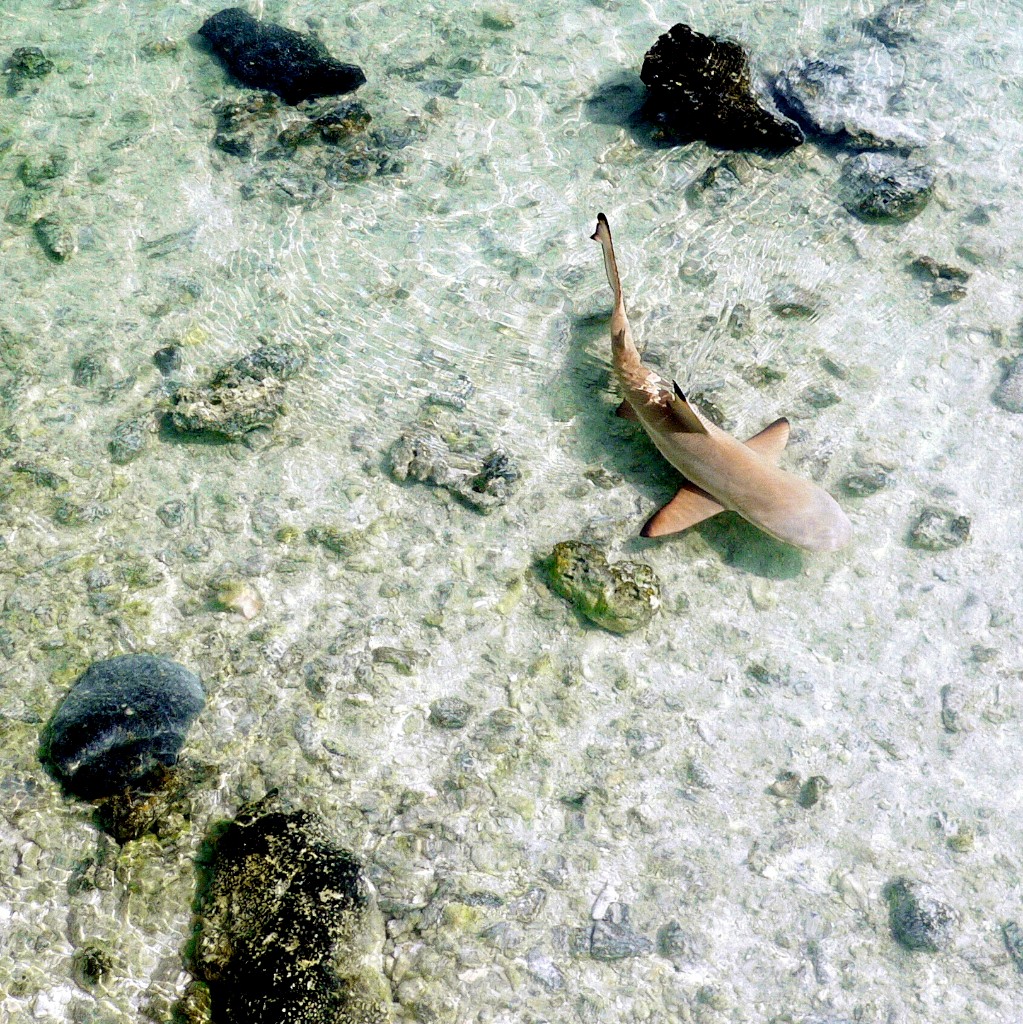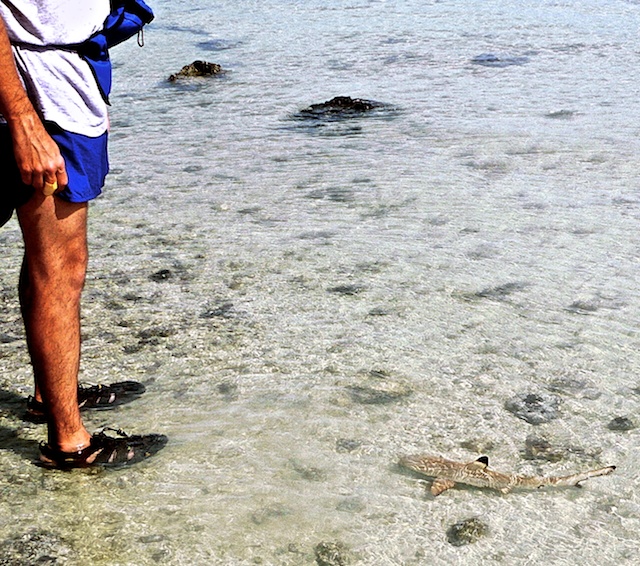Published in the Ocean Watch column, Honolulu Star-Advertiser © Susan Scott
June 3, 2013
FAKARAVA ATOLL, Tuamoto Archipelago » To pass the evenings at anchor here in the South Pacific’s winter, Craig and I often watch movies on the boat’s computer. Last week while shuffling through the dozens of DVDs I’ve collected over the years on my sailboat, Honu, I found one I forgot I had.
“Here’s ‘Jaws,'” I said, thinking we might find this old film funny.
“No,” Craig said. “I’m not watching a cheesy mechanical fish that portrays sharks as monsters.”
I agreed. It’s hard to have a sense of humor about a film that unfairly demonized sharks and produced lifelong shark phobias among millions of people.
 Small Black Tipped Reef Shark. Mopelia, French Polynesia, 2006.
Small Black Tipped Reef Shark. Mopelia, French Polynesia, 2006.
See picture below for size reference.
©2006 Susan Scott
We are particularly sensitive to this issue here in the Tuamotos, where residents view sharks as a natural and welcome part of the atolls’ healthy coral reefs.
Visitors from all over the world come to snorkel and dive with Tuamoto sharks, making reef sharks a significant part of the economy.
Since we arrived by sailboat a couple of weeks ago, we have been wading, snorkeling, diving, surfing and kiting with sharks daily. All our encounters have been positive, thrilling but not scary, close but not unnerving.
Last week a 6-foot-long black-tip reef shark passed so close beneath me that I thought I felt a touch of dorsal fin on my belly. But even that wasn’t frightening. The shark nearly ran into me because it was going about its own business of fishing.
The three kinds we routinely see here are the three most common on healthy coral reefs around the world: black-tip, white-tip and gray reef sharks. (There are black-tip and white-tip oceanic sharks, but those are different species.)
When we wade in shallow water, juvenile black-tips swim nearby in twos and threes looking for dinner. The slightest movement, such as raising a camera, startles the little sharks, and in a flash they dash far from the two-legged monsters.
One day Craig dived to a coral head base to explore a cave, and a white-tip reef shark cruised out of an adjacent cave. If it was miffed about having its nap disturbed, we didn’t know it. The shark disregarded the humans milling about and slipped into another crevice to resume its rest.
The gray is a bolder species. During one snorkeling excursion, a 4-foot-long gray reef shark swam straight toward me. After a few seconds of eye-to-eye contact, the shark satisfied its curiosity and disappeared in the deep blue. Silently I thanked the sleek and graceful fish for practically posing for pictures.
Here in Fakarava’s south channel, a World Heritage Site, where currents rush like river rapids in and out of the 200-yard-wide gap, those three species hang out by the hundreds. The nutrient-rich water bathes great walls of multicolored corals from the surface to about 100 feet deep, and those in turn feed and shelter just about every kind of reef fish in the South Pacific.
These well-fed sharks are used to sharing their fish paradise with people and ignore us completely.
To celebrate the joy of swimming on reefs where sharks are respected and admired, and to tune up our sense of humor about fish, tonight we’re going to watch “Finding Nemo.”
